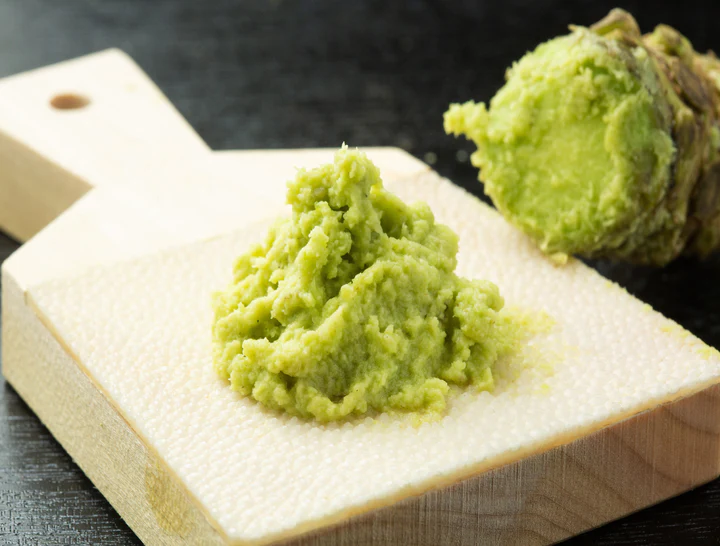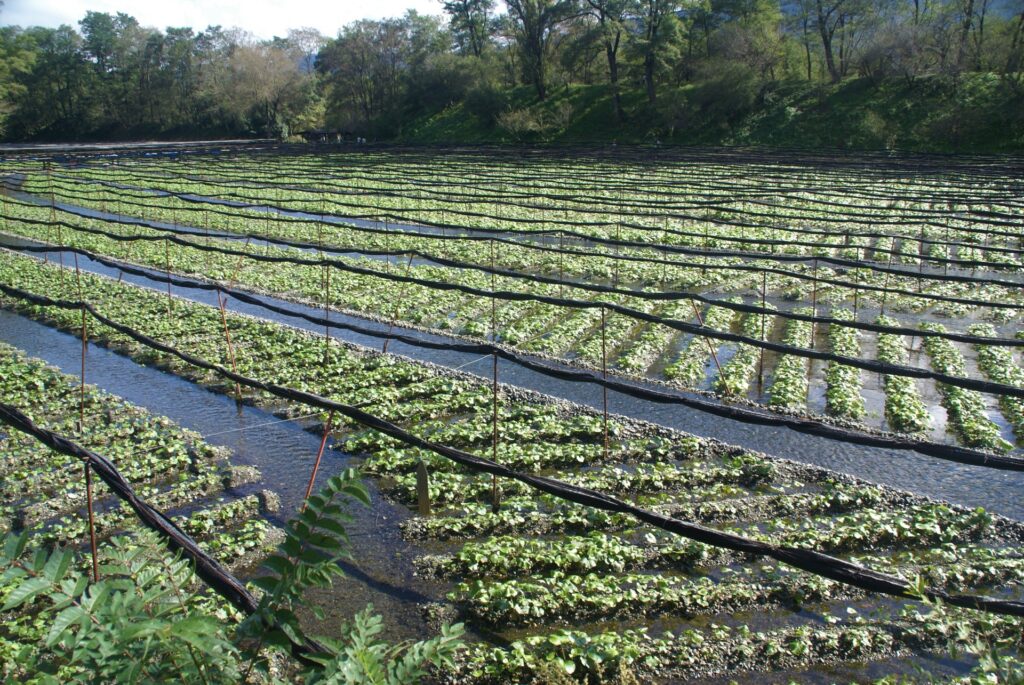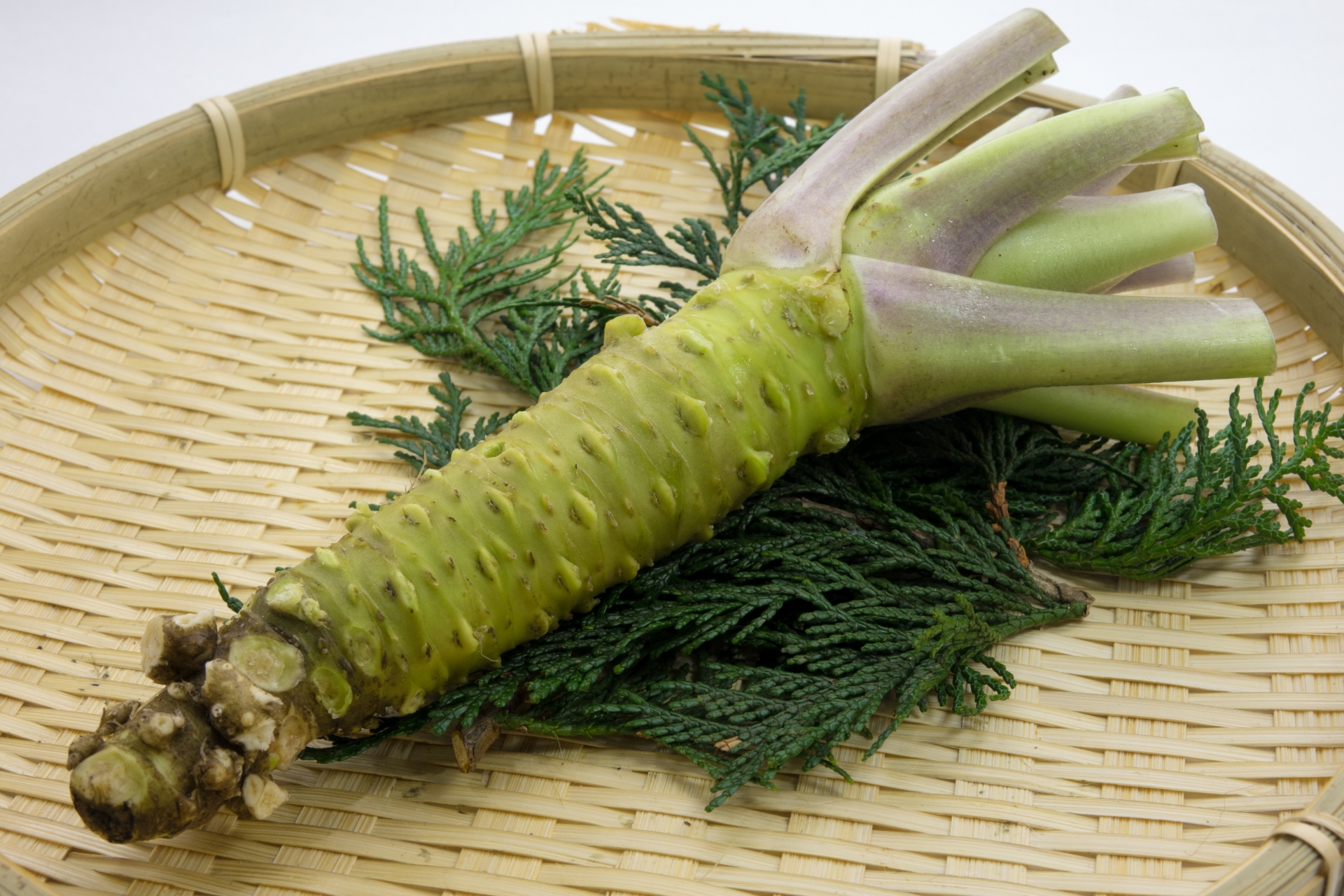Konnichiwa! Wasabi, with its pungent aroma and fiery flavor, is a staple condiment in Japanese cuisine. But what is wasabi exactly, and why does it hold such significance in Japanese culture? Let’s explore the origins, cultivation, culinary uses, and cultural importance of this iconic green paste.
Affiliate Disclaimer: I only recommend products I would use myself and all opinions expressed here are our own. This post may contain affiliate links that at no additional cost to you, I may earn a small commission. As an Amazon Associate I earn from qualifying purchases.

Planning a trip to Japan?
What is Wasabi? The Green Rhizome
Wasabi, scientifically known as Wasabia japonica, is a member of the Brassicaceae family, which also includes horseradish and mustard. It is native to Japan and grows naturally in cool, mountainous regions with ample water supply.

What Does Wasabi Taste Like?
Wasabi has a unique and distinctive flavor profile that is difficult to replicate with other condiments. Its taste is often described as pungent, spicy, and slightly sweet, with a characteristic heat that tingles the palate without overwhelming it. When freshly grated, wasabi emits a strong, aromatic aroma that adds to its sensory appeal.
The spiciness of wasabi comes from allyl isothiocyanate, a compound released when the rhizome is grated or crushed. This compound is responsible for the heat that is felt in the sinuses and on the tongue when consuming wasabi. Unlike chili peppers, which provide a more straightforward heat sensation, the spiciness of wasabi is often described as more complex and nuanced.
In addition to its spiciness, wasabi also has subtle sweet notes, which help balance out its intense heat. This sweetness adds depth to its flavor profile, making it more than just a source of heat but also a contributor to the overall taste experience.
Is Wasabi hotter Than Jalapeno?
Wasabi is known for its distinctive heat, which is primarily attributed to allyl isothiocyanate, a compound released when the rhizome is grated or crushed. This compound produces a unique, sharp spiciness that is felt primarily in the sinuses and on the tongue. While wasabi can provide a similar and significant kick, its heat tends to be more short-lived compared to that of chili peppers like jalapeños.
Jalapeños, on the other hand, contain capsaicin, the compound responsible for the characteristic heat found in chili peppers. The heat from jalapeños is often described as more of a steady, lingering burn that can be felt throughout the mouth and throat. The intensity of jalapeño heat can vary depending on factors such as ripeness and individual pepper variability.

Is Wasabi Healthy?
Wasabi not only adds a distinctive flavor to dishes but also offers several potential health benefits:
Can You Buy Real Wasabi in the US?
Yes, it is possible to buy real wasabi in the United States, although it may not be as widely available as imitation wasabi made from horseradish, mustard, and food coloring. Real wasabi, made from the grated rhizome of the Wasabia japonica plant, is considered a gourmet product and is often more expensive than its imitation counterparts. You can find real wasabi at specialty grocery stores, Japanese markets, or online retailers.
When purchasing real wasabi, look for products that specify “100% Wasabia japonica” or “real wasabi” to ensure that you’re getting the authentic product rather than a blend of other ingredients. Keep in mind that real wasabi has a shorter shelf life compared to imitation wasabi, so it’s best to use it soon after purchase for the freshest flavor.
Cultivating Wasabi: Nurturing the Elusive Rhizome
Growing wasabi is a delicate and labor-intensive process, requiring specific conditions to thrive.

Culinary Uses: Elevating Japanese Cuisine with Wasabi
What is wasabi? Wasabi is more than just a condiment; it’s a cornerstone of Japanese culinary tradition, adding depth and complexity to a variety of dishes.

Cultural Significance: Wasabi in Japanese Tradition and Folklore
Beyond its culinary uses, wasabi holds a special place in Japanese culture, symbolizing purity, strength, and resilience.
Wrapping Up Wasabi
So, what is wasabi? Wasabi is much more than a spicy condiment; it’s a symbol of Japanese culinary artistry, cultural heritage, and reverence for nature. From its humble origins in the misty mountains of Japan to its ubiquitous presence on sushi plates around the world, wasabi continues to captivate palates and inspire culinary creativity. So the next time you reach for that dollop of green fire, take a moment to savor the rich tapestry of history and tradition that accompanies it.
Disclaimer: If you use the link on this page to purchase travel insurance, we will receive a fee from Freely, a brand of Cover-More Insurance Services Pty Limited ABN 95 003 114 145 (AFSL 241713) (Cover- More). We do not act for Cover-More or Freely. The information provided is only on the availability of Freely products. We do not give advice & the information provided is not intended to give an opinion or recommendation regarding the product. For information on how to contact Cover-More or Freely refer to the PDS, FSG & TMD which can be found on the Freely website.



